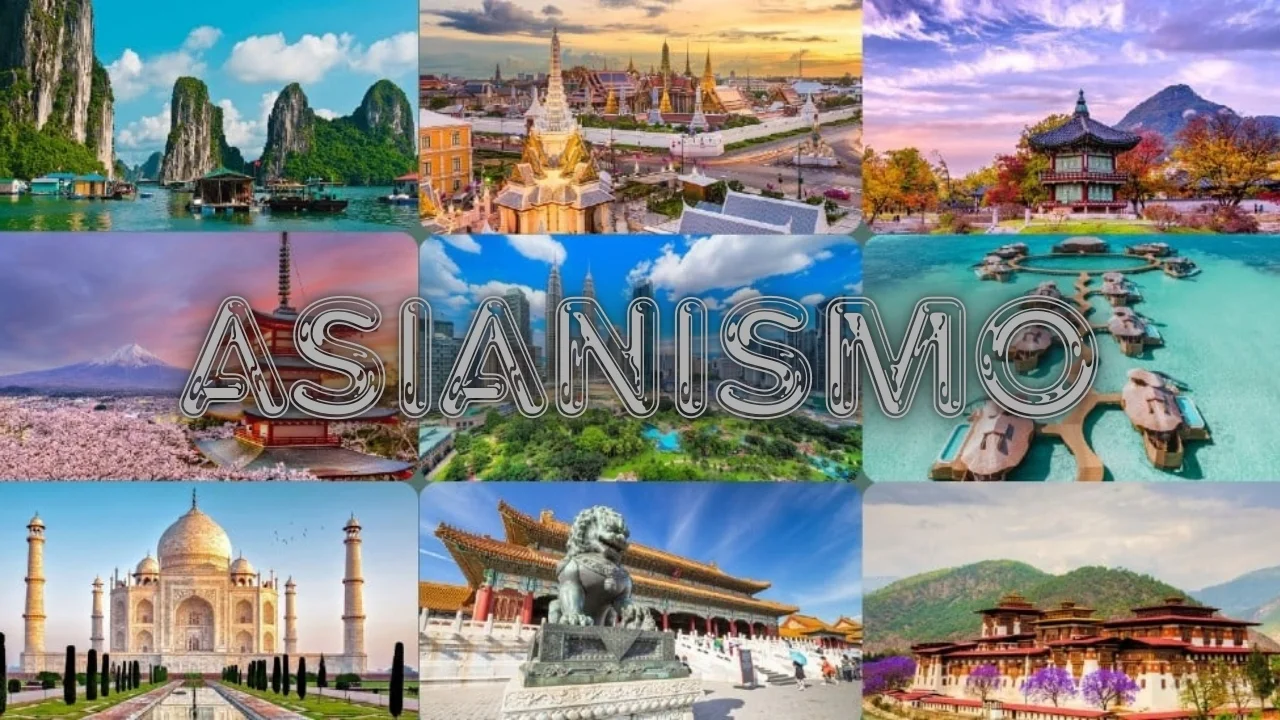Asianismo is a cultural, philosophical, and political movement that has played a pivotal role in shaping various societies across Asia. Stemming from a blend of Asian traditions, values, and beliefs, it seeks to emphasize the distinct identity and independence of Asian cultures, especially in the context of colonialism and Western influence. Understanding asianismo can offer valuable insights into the region’s socio-political dynamics, art, philosophy, and modern identity formation.
In this article, we will explore the core concepts of asianismo, its significance in today’s world, and its various applications across different fields. We’ll also examine the challenges surrounding this movement and discuss how asianismo continues to shape Asia’s cultural and political landscape.
What is Asianismo? A Comprehensive Overview
Asianismo refers to a movement that promotes the recognition and revitalization of indigenous Asian values, traditions, and philosophies. It stands as a rejection of Western dominance and the effects of colonialism, advocating for Asia’s cultural, political, and philosophical identity. The movement often aims to counteract the effects of globalization and seeks to preserve and promote unique Asian perspectives.

Historical Origins of Asianismo
Asianismo has roots in the late 19th and early 20th centuries, coinciding with periods of intense colonization. Many Asian intellectuals, political leaders, and scholars began advocating for the cultural and political sovereignty of their respective countries. This movement can be seen as a response to the growing influence of Western imperial powers.
Key figures in the asianismo movement include Rabindranath Tagore in India, José Rizal in the Philippines, and Sun Yat-sen in China. Each of these leaders sought to uplift their people by reviving indigenous knowledge, traditions, and governance systems.
Philosophical Foundations of Asianismo
At its core, asianismo draws on several key Asian philosophies, including Confucianism, Buddhism, Taoism, and Hinduism. These philosophies share common values such as harmony, collectivism, respect for nature, and spirituality. By merging these traditions, asianismo creates a philosophical framework that stands in contrast to Western individualism, materialism, and secularism.
The emphasis on community well-being, interconnectedness, and respect for the environment is central to asianismo. This holistic approach seeks to redefine success and progress, focusing on human and environmental flourishing rather than purely economic growth.
Importance of Asianismo in Modern Society
Cultural Reclamation and Identity
Asianismo plays an essential role in helping Asian societies reclaim their cultural identities. For centuries, colonization and globalization have eroded many indigenous traditions, languages, and practices. The asianismo movement provides a platform for reviving these elements, allowing modern generations to connect with their roots.
In countries like Japan and South Korea, we see a resurgence of traditional art forms, such as calligraphy, tea ceremonies, and traditional clothing, as part of this cultural reclamation. This revival also encourages a renewed sense of national pride and cultural awareness.
Preserving Traditional Knowledge
Asianismo also emphasizes the importance of preserving traditional knowledge systems, many of which have been passed down through generations. Indigenous medical practices, agricultural techniques, and social structures are still relevant today and offer valuable alternatives to Western methodologies.
For example, Ayurveda and traditional Chinese medicine are gaining global recognition for their holistic approaches to health and wellness. These ancient systems are aligned with the philosophies of asianismo, focusing on harmony between mind, body, and environment.
Benefits of Asianismo in a Globalized World
Cultural Diversity and Multiculturalism
In an increasingly globalized world, the preservation of cultural diversity is more important than ever. Asianismo contributes to the rich tapestry of global multiculturalism by promoting unique cultural practices, beliefs, and systems of governance. This diversity fosters cross-cultural understanding and collaboration.
By embracing asianismo, countries can maintain their cultural integrity while still participating in global markets. This balance between local identity and global integration is vital for sustainable development.
Counteracting Cultural Homogenization
Globalization often leads to the homogenization of cultures, where dominant Western practices overshadow local traditions. Asianismo offers a way to resist this trend by emphasizing the importance of maintaining distinct cultural identities. The movement encourages societies to take pride in their heritage rather than conform to global norms.
Countries like Thailand, Vietnam, and Indonesia have integrated elements of asianismo into their national policies, promoting cultural tourism, language preservation, and traditional art forms. These efforts contribute to the long-term preservation of their unique cultural landscapes.
Economic Growth Through Cultural Industries
Asianismo has also led to the growth of cultural industries across Asia. Traditional crafts, fashion, and art are now being marketed globally, contributing to the economic development of many countries. For instance, the resurgence of traditional Japanese kimono-making or the global popularity of Indian textiles highlights how cultural heritage can fuel economic growth.
Furthermore, the principles of asianismo promote sustainable production practices, ensuring that these industries respect the environment and local communities. This aligns with the growing global demand for ethical and sustainable products.
Applications of Asianismo in Modern Governance
Nationalism and Political Independence
One of the key aspects of asianismo is its role in fostering political independence and nationalism. Many Asian countries have drawn on asianismo principles to assert their sovereignty and resist external influence. This has been particularly relevant in the context of post-colonial states seeking to establish their own governance models.
For example, in the Philippines, the writings of José Rizal have inspired generations to resist foreign occupation and build a government rooted in Filipino values. Similarly, India’s independence movement under leaders like Mahatma Gandhi was influenced by the desire to restore indigenous values and governance systems.
Economic Models Based on Asian Philosophies
Asianismo has also influenced economic models across the continent. Countries like Japan and South Korea have successfully blended Western technology with Asian values of collective well-being and long-term sustainability. These economies prioritize communal success, environmental stewardship, and social responsibility over short-term profits.
China’s concept of a “harmonious society,” inspired by Confucian values, reflects the principles of asianismo. This philosophy underpins China’s approach to economic development, aiming to balance rapid growth with social cohesion and environmental sustainability.
Challenges Facing Asianismo Today
Balancing Tradition and Modernity
One of the main challenges of asianismo is finding the balance between tradition and modernity. While preserving cultural heritage is important, societies must also adapt to modern technologies, global trade, and contemporary lifestyles. Some critics argue that a strict adherence to traditional values may hinder progress.
For example, while traditional family structures are central to many Asian cultures, modern demands for gender equality and individual freedom challenge these systems. Societies must navigate these tensions, finding ways to integrate modern values while maintaining their cultural identity.
Resisting Westernization and Cultural Appropriation
Another challenge is resisting the pervasive influence of Western culture and the appropriation of Asian traditions by global markets. While the world increasingly appreciates Asian food, fashion, and spirituality, there is a risk of these elements being commodified or distorted. Asianismo advocates for the authentic representation and preservation of cultural practices, ensuring they are respected and understood in their proper context.
The popularity of yoga, for example, has led to debates about cultural appropriation. Many practitioners argue that the spiritual and philosophical roots of yoga have been diluted in favor of commercialization. Asianismo calls for a deeper understanding and respect for such traditions.
Solutions for Promoting and Sustaining Asianismo
Cultural Education and Awareness
To sustain asianismo, it is essential to promote cultural education and awareness at all levels of society. Schools, universities, and community organizations can play a significant role in teaching the history, philosophy, and values of the movement. Encouraging the study of local languages, arts, and customs can help foster a sense of pride and connection to one’s heritage.
Government programs that support cultural initiatives, such as traditional festivals, museums, and cultural centers, are also crucial for the long-term preservation of asianismo values.
Supporting Local and Indigenous Communities
Another solution involves supporting local and indigenous communities that are the custodians of traditional knowledge and practices. Governments and NGOs can provide resources, funding, and platforms for these communities to share their expertise and keep their traditions alive.
Incorporating indigenous knowledge into mainstream sectors, such as healthcare, agriculture, and environmental conservation, can also ensure that these valuable practices are preserved and respected.
Embracing Technology While Maintaining Cultural Identity
Technology can play a role in preserving and promoting asianismo. Digital platforms, social media, and e-commerce can help showcase traditional art, music, and knowledge to a global audience. However, it’s important to maintain the authenticity of these cultural expressions and prevent them from being overly commercialized or diluted.
Countries like South Korea have used technology to promote their cultural identity through the global popularity of K-pop, K-dramas, and Korean fashion. These industries have managed to retain their cultural essence while appealing to international markets.
Conclusion
Asianismo is a powerful movement that continues to shape the cultural, political, and economic landscapes of Asia. By emphasizing the importance of indigenous values, traditions, and knowledge systems, it offers a unique alternative to Western-driven globalization. From promoting cultural diversity to influencing modern governance, asianismo remains relevant in addressing the challenges of modernity.
As Asian societies continue to evolve, the principles of asianismo can provide valuable guidance in balancing tradition with innovation, cultural pride with global participation, and sustainability with economic growth.
FAQs
1. What is the main goal of Asianismo?
Asianismo aims to promote and preserve the unique cultural, philosophical, and political identity of Asian societies. It advocates for the revival of indigenous traditions and values while resisting Western cultural dominance.
2. How does Asianismo impact modern governance?
Asianismo has influenced modern governance by encouraging countries to draw on their cultural heritage when shaping political and economic policies. It promotes communal well-being, social responsibility, and long-term sustainability.
3. Why is cultural preservation important in Asianismo?
Cultural preservation is central to Asianismo because it ensures the survival of traditional knowledge systems, languages, and practices. These elements contribute to a society’s identity and offer alternatives to Western-driven globalization.
4. Can Asianismo coexist with modern technology?
Yes, Asianismo can coexist with modern technology. The movement advocates for using technology to promote and preserve cultural practices while maintaining the authenticity of these traditions.
5. How does Asianismo address the challenges of globalization?
Asianismo offers a framework for resisting cultural homogenization by promoting local identity and traditions. It encourages societies to take pride in their heritage and maintain their cultural diversity while participating in global markets.



